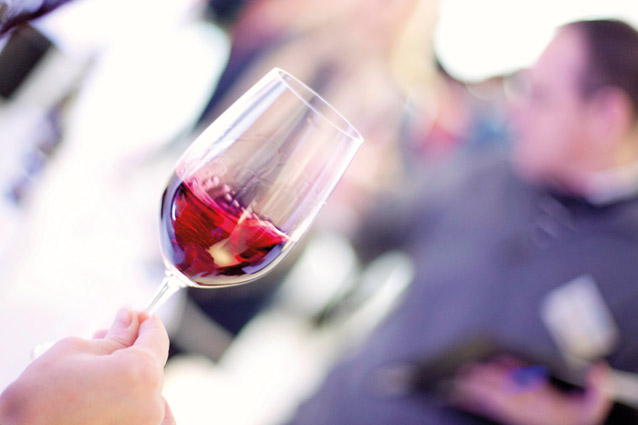Essentially, once you take Chile out of the equation, the ‘Rest of the New World Bordeaux reds’ category came down to a dog-fight between Australia and South Africa. Which, after a few rounds of scrapping, shuffling and pummelling, probably finished more or less even on points.
 South Africa, as you might expect for Cab/Merlot-type wines, was dominated by Stellenbosch. Only one medal winner was under a tenner, with the majority of successful wines between £12 and £15.
South Africa, as you might expect for Cab/Merlot-type wines, was dominated by Stellenbosch. Only one medal winner was under a tenner, with the majority of successful wines between £12 and £15.
‘I would have said we were looking for value for money, but it doesn’t seem to be there,’ said The Rib Room’s Louise Gordon. ‘People are going to pay less for a South African Cabernet/Merlot than they will for a Californian.’
Not that moving down the price scale was really an option. Way too many of the cheap wines had what one taster called ‘that slightly grubby, leathery character that you get with some of their reds’. Welcome, ladies and gentlemen, to the world of the Leaf Roll virus.
Once these were weeded out, what was left, essentially, was a good range of fairly expensive wines, which, if you can sell them, would be a good addition to your list. The Journey’s End, in particular, was felt to be a good combination of Bordelais elegance and New World fruit at a decent price.
Australia, meanwhile, received a big tick from the sommeliers for its lighter bottles (are you watching Argentina?) and, in general, for the contents, too – certainly once the cheap ‘could be anything from anywhere’ versions were left behind.
‘The further up the scale we went, the better the value for money became,’ said consultant Caspar Auchterlonie. Though moving upscale – however good the wines – is not without a few inherent difficulties.
‘New World Cab is very popular for us at Tate Modern,’ said The Tate Group’s Gustavo Medina. ‘I thought all the Aussie wines we tried were highly drinkable. The problem is that the more expensive ones would be hard to sell at £60 on a list.’
In this, Coonawarra has an advantage. Not just because its wines have an inherent mintiness that helps sommeliers with food matching, but also because of its geography. ‘If you explain the Terra Rossa soil it can help to sell it. There’s a point of difference,’ said Mariyana Radulova of the Royal Thames Yacht Club.
In the end, Terra Rossa or not, the two Aussie Golds went to wines from the Clare Valley and Margaret River. ‘[The Skillogalee] is a big wine, but really nice and persistent,’ said consultant Frédéric Jean-Yves Billet. ‘It’s got a particularly good nose and excellent fruit – I’m thinking lamb with ratatouille and a rosemary jus.’
Interestingly, most of the Margaret River wines failed to medal for the simple reason that they were often deemed too young. As one taster put it, ‘You want a £15 wine to be drinking well now.’ The Voyager Estate, though, was an exception, described by the judges as ‘a very good, modern classic style and quite elegant’.
For the rest of the New World, it was a sadly familiar tale. Argentina’swines were mostly too sweet, too oaky and too alcoholic, attracting some truly damning criticism from the tasters, who repeatedly found them ‘flat’, ‘inexpressive’ and ‘too expensive’.
New Zealand failed (for the second consecutive year) to get any medals at all, despite entries coming in from all over the country, from Waiheke to Hawkes Bay to, er, Marlborough. ‘Lots of green fruit and tannin, too much oak and high prices,’ said dispirited journalist and consultant Natasha Hughes. Not good enough for a wine style that, as Etrusca Restaurants’ Luigi Buonanno pointed out, ‘you don’t necessarily need on your list’.
From the US, Washington’s wines were felt to lack sufficient varietal definition for the prices charged. And though California picked up a decent raft of medals this year (including a good, but undoubtedly top-end Gold), the prices almost across the board were eye-watering.